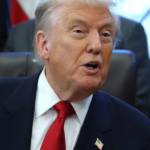A proposal floated by the Trump administration to create a 50-year mortgage product to improve housing affordability could offer significant immediate savings to homebuyers, but at the steep cost of a doubled interest payment burden over the life of the loan, according to a recent analysis by John Lovallo of UBS Securities.
Caveating that many basic questions remain unanswered, a back-of-the-envelope calculation shows a clear trade-off between immediate monthly affordability and long-term debt accumulation. Based on Lovallo’s estimates, the extended loan term could lower the monthly payment on a median-priced home by roughly $119.
While the short-term financial relief is meaningful for consumers struggling with current housing costs, the long-term fiscal penalty is severe. According to the UBS analysis, extending the loan duration from three decades to five decades could double the dollar amount of interest paid by the homebuyer on that median-priced home over the life of the loan. Furthermore, this significantly extended repayment schedule would substantially slow the rate of equity accumulation for the homeowner.
UBS analysts on Lovallo’s team, including Spencer Kaufman and Matthew Johnson, based this calculation on a median-priced home of about $420,000, assuming a 12% down payment of $50,400, leaving a loan amount of $369,600. For comparison, the analysis posits a standard 30-year mortgage would carry a 6.33% interest rate, resulting in a monthly payment of $2,295.
However, the 50-year product is estimated to carry a rate 50 basis points higher, at 6.83%. Despite this higher rate, extending the term to 600 months (50 years) would reduce the monthly payment to $2,176. This calculation suggests an increase to the average consumer’s buying power of almost $23,000, allowing them to afford a home priced up to $442,995 while keeping the monthly payment at the 30-year benchmark of $2,295.
In concluding its initial thoughts on the proposal, UBS reiterated its finding from the end of a three-year study in early October: The housing market is so inefficient and frozen the one clear solution is direct government investment in housing infrastructure. The answer lies in, of all things, manufactured wall panels.
In October, Lovallo’s team noted several damning facts: Housing affordability is close to the worst it’s been since the mid-1980s, per the NAR Affordability Index, while Federal Reserve research indicates construction is the “only major industry to have registered negative average productivity growth since 1987.” Finally, Lovallo’s team estimated a structural shortage of homes in the U.S. housing market of 7 million units.
UBS suggested boosting the penetration of manufactured wall panels would be a meaningful strategy, generating up to a 30% reduction in framing days alongside a 20% reduction in waste. Construction costs would increase by $783 per unit, the UBS study found, suggesting reluctance on the private sector’s part.









